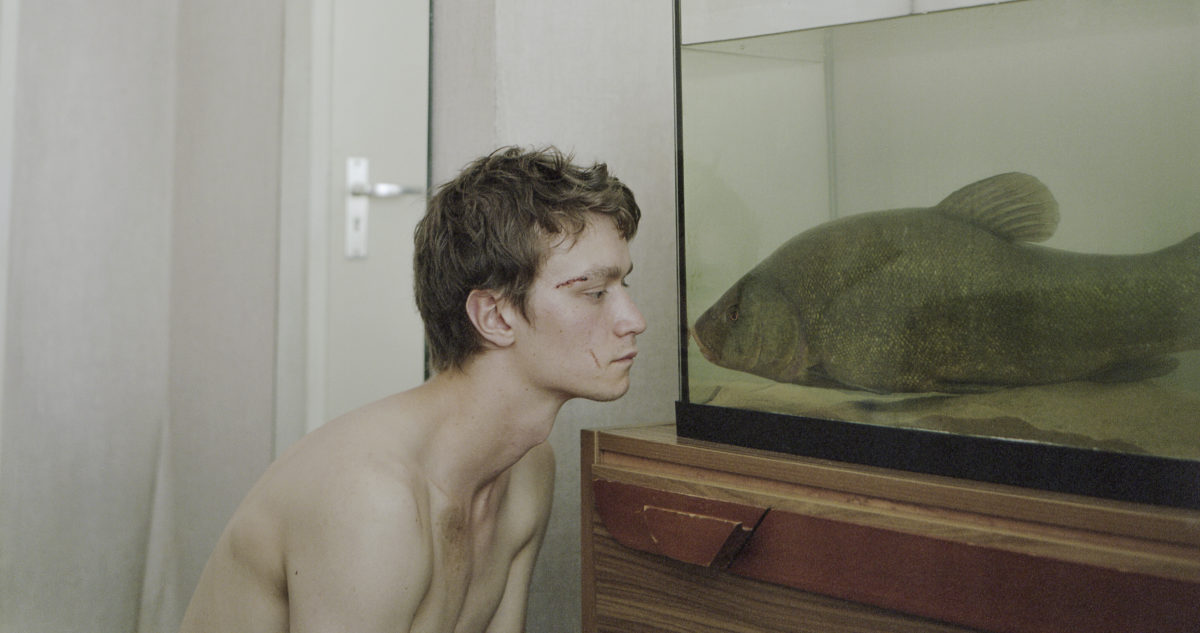One of cinema’s strangest phenomena is the pedophile theme, arguably so prevalent as to be its own sub-genre. Deliberately walking headlong into moral taboo seems to be the modus operandi among the Gaspar Noé contingent of edgier art-cinema, in depicting a character’s struggle against their darkest urges. American entries into the genre like American Beauty (Sam Mendes, 1999) and Happiness (Todd Solondz, 1998) even rely on screwball comedy to make the audience sympathise with wretched behaviour. With Muidhond, Flemish director Patrice Toye adapts Inge Schilperoord’s book, treating her material with a respectful moral certainty that falls into some obvious traps of depicting pederasty on-screen.
While the Americans make sure to cast noxious looking movie stars like Jackie Earle Haley as their pederasts, European films get away with casting Mads Mikkelson-types as chisel-jawed perverts, to signify that even handsome guys are gross. Tijmen Govaerts takes the lead in Muidhond as the often shirtless Jonathan, who gazes wistfully to the bleak industrial horizon of Schependijk, a lock complex in the Dutch city of Terneuzen, and bites his lip as he watches his nine-year-old neighbour Elke (Julia Brown).
Just out of prison, the twenty-five-year-old works at Cognitive Behavioural Therapy from an isolated shack, returning to his job at a fish factory and looking after an injured Muidhond carp. “You’re going to get better… and so will I.” Yet in scene after scene, the film works overtime to push Jonathan towards Elke. It is baffling that he doesn’t move away, that his mother is content to be absent with this child next door. These questions aren’t answered by the other characters, whose lack of psychological life robotically moves the film towards its endpoint.
The middle section, in which he fights his feelings for Elke by dating a girl at the fish factory, who throws herself at him, turns the film into miserabilist anti-Rom-Com. Toye simplifies each scene for both the viewer and the characters, turning Elke into a perverse manic-pixie-dream-girl by making her a vivacious, imaginative young girl who has outgrown the trauma of her parental abuse, turning it into a game from which Jonathan can learn. Yet Muidhond is too self-important about its subject to lean into its inherent romantic tropes, instead delivering a slice of European art-realism.
These beats make Muidhond compelling in the moment, handheld camerawork bringing the viewer into close contact with Jonathan’s consciousness, looking where he looks, flinching along with him. His showering with the dog is a humorous detail. Jonathan associates innocent animals with Elke, which comes full circle in an awkward scene where he comes across her in the shower. The tense horror of these scenes is keenly felt, but to what end? What taboos are actually broken by adding another entry into the canon of films that deal with pedophilia?
Toye nudges the viewer into supporting this journey without putting in the legwork. Why nobody thought to call child services on the clearly neglected Elke remains the deepest question. There are just too many dramatic fall-shorts to make Muidhond convincing. The final turn, fate snatched from Jonathan’s own hands as though interfered by the Greek Gods, attempts to insert a tragic social justice into the ending. That final image of the carp is simplistic. A beast captured, through no fault of its own.
